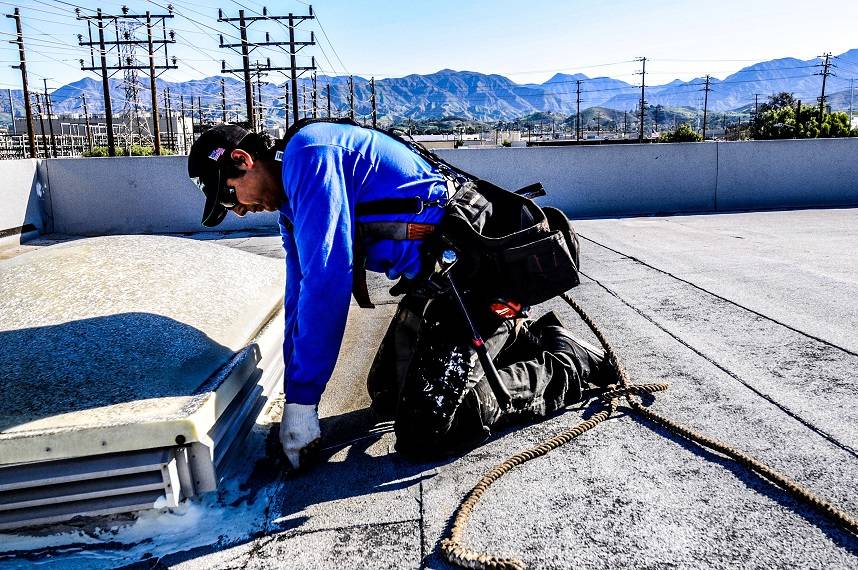After 30 years of Roof Replacement projects through Los Angeles and Orange County, we know fairly well how re-roofing a commercial building can be a subsantial investment. But your roof is extremel important and has the pptential to proetect your business’s assets, enhance energy efficiency, and provide a welcoming environment for employees and customers. However, the process of re-roofing a commecial building is not to be taken lightly. It invloves a multitude of considerations, from the choice of roofing materials to complainace with local building codes and permits. In this article we’ll delve into the five critical things you need to know about roof replacement projects on a commercial building. Whether you’re a property owner, facility manager, or business decision-maker, this information will help you navigate the complexities of this essential renovation project with confidence and ensure long-term success of your roofing endeaver. Let’s dive in!
1.) Assessment and Inspection:
Before starting the re-roofing process, it’s crucial to assess the existing roof thoroughly. This includes inspecting the current condition of the roofing materials, checking for water damage, leaks, and any structural issues. A professional roofing contractor or inspector can help determine the best approach and materials for your commercial building.
2.) Re-roofing Roofing Material Selection:
The choice of roofing material is a critical decision that can impact the durability, energy efficiency, and cost of the project. Common commercial roofing materials include single-ply membranes (TPO, PVC, EPDM), built-up roofing (BUR), metal roofing, and modified bitumen. Factors such as climate, budget, and building use should influence your material selection.
3.) Local Building Codes And Permits:
Re-roofing a commercial building often requires compliance with local building codes and obtaining the necessary permits. These regulations can vary depending on your location and the type of roofing material you choose. Ensure you’re aware of and follow all legal requirements to avoid potential issues during or after the re-roofing project.
4.) Professional Roofing Contractor:
Hiring a qualified and experienced roofing contractor is essential for a successful re-roofing project. Look for contractors with a proven track record in commercial roofing, proper licensing and insurance, and positive references. They should also be knowledgeable about the specific roofing material you’ve chosen and its installation requirements.
5.) Budget and Project Timeline
Re-roofing a commercial building can be a substantial financial investment. It’s important to establish a realistic budget for the project and consider potential cost overruns or unexpected repairs. Additionally, have a clear understanding of the project timeline, as weather and other factors can affect the completion date. A well-planned project schedule can minimize disruptions to your business operations.
In conclusion, re-roofing a commercial building is a task that demands careful planning, expertise, and attention to detail. From assessing the existing roof to selecting the right materials, adhering to local regulations, and choosing a reputable contractor, these five key considerations can make a significant difference in the outcome of your commercial roofing project. By investing time and resources into a well-executed re-roofing endeavor, you’re not only safeguarding your business’s assets but also contributing to the long-term durability and energy efficiency of your commercial space. Whether you’re in the midst of planning a re-roofing project or contemplating one in the near future, the knowledge gained from this article will serve as a valuable guide to ensure a successful and lasting roofing solution for your commercial building.
